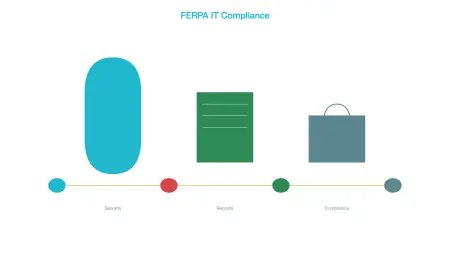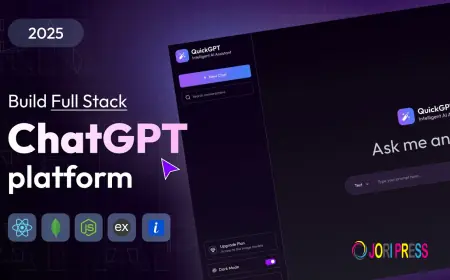Advanced Type System Features in TypeScript for Full-Stack Development
Master advanced TypeScript for scalable web apps. A Java full stack developer course helps you build robust projects with generics, conditional and mapped types.

TypeScript has become an indispensable tool in the modern full-stack developer’s toolkit. Its ability to bring strong typing to JavaScript applications helps developers write safer, more maintainable code—especially as projects scale in complexity. Beyond its basic type annotations, TypeScript offers powerful and advanced type system features that can transform how developers build web applications, both on the frontend and backend.
For full-stack developers working with frameworks like React, Angular, or Vue on the frontend and Node.js or Java on the backend, mastering these advanced TypeScript capabilities is crucial for robust application architecture. These features not only prevent bugs before they happen but also enhance collaboration across teams by creating clear and predictable interfaces.
The Role of Advanced Types in Full-Stack Projects
In large-scale applications, developers often work with deeply nested objects, various third-party APIs, and dynamic data flows. TypeScript’s advanced type system helps address these challenges through features like union types, intersection types, generics, conditional types, and mapped types.
For instance, when developing an admin dashboard for a SaaS platform, a user object might contain optional roles, nested permissions, and dynamic settings. TypeScript allows developers to define types that can adapt to such complexity without sacrificing code readability.
Union and Intersection Types: Building Flexibility
Union types let you define a variable that could be one of several types. For example, you might have a function that accepts a string or a number as input. This is particularly useful in UI development where user input types can vary.
Intersection types combine multiple types into one. This is ideal when you want to merge shared functionality. Suppose you're building a role-based access control system—using intersection types can let you define a new type that merges user and admin privileges, enabling safe access to features based on the composite type.
Generics: Type-Safe Reusability
Generics are essential in full-stack applications where you want to create reusable, type-safe components. Imagine a utility function for fetching API data. Instead of writing separate functions for each data model, you can use generics to create one flexible function that adapts to the expected return type.
This concept becomes even more powerful when working with backend APIs. Whether you're using Express with Node.js or connecting to a Spring Boot backend, generics allow you to write consistent, scalable code for request/response handling, database operations, and form validation.
Full-stack developers pursuing advanced roles often choose structured learning to understand and implement these concepts effectively. A java full stack developer course may cover not just backend fundamentals with Spring or Hibernate, but also frontend development with TypeScript-based frameworks and deeper dives into these advanced typing patterns.
Conditional and Mapped Types: Smart Type Logic
Conditional types add logic to your type definitions. You can create types that change based on conditions, which is particularly useful when dealing with polymorphic data structures or API responses that vary based on user roles or application states.
Mapped types allow you to transform existing types. For example, if you want to make all fields of a data model optional for an edit form, mapped types let you create a new type from the original with each property marked as optional—without redefining everything manually.
These tools are invaluable when syncing frontend form states with backend data structures, especially in enterprise-grade apps that require high reliability.
Enhancing Code with Utility Types
TypeScript provides a suite of built-in utility types like Partial, Pick, Omit, Readonly, and Record. These help developers refactor code without introducing breaking changes. For example, using Omit to exclude sensitive fields like passwords from a user profile object sent to the frontend adds an extra layer of data protection.
Utility types are also beneficial in testing environments. Mocking data, simulating API responses, or altering object structures for unit tests become much easier and safer with these features in place.
Real-World Application in Full-Stack Development
Whether you're building a customer portal, a marketplace, or a CRM system, TypeScript’s advanced types streamline the process of syncing frontend and backend logic. They reduce boilerplate code and improve consistency across services.
For instance, consider an e-commerce application that handles various types of users—shoppers, admins, and vendors. TypeScript lets you define conditional types to handle role-specific access, use mapped types to create editable forms, and leverage generics for dynamic data fetching. This ensures a clean, predictable development workflow.
By combining TypeScript’s frontend power with robust backend technologies like Java and Spring Boot, developers create high-performance, scalable applications with fewer bugs and greater team collaboration. Courses often include such practical implementations, enabling learners to apply these skills directly to real-world scenarios.
Conclusion
As the complexity of web applications continues to grow, developers must embrace tools that simplify and safeguard the development process. TypeScript’s advanced type system features give full-stack developers the precision they need to build reliable, scalable, and readable codebases.
From generics and conditional types to mapped and utility types, each of these tools plays a vital role in building sophisticated software solutions. For professionals aiming to level up their careers, understanding how to apply these features across the stack—especially in TypeScript-heavy environments—is no longer optional but essential.
Incorporating these practices into your workflow not only leads to better software but also makes you a more effective developer in any team or project. And for those looking to accelerate their journey, investing in structured learning like a java full stack developer course can provide both the foundation and the practical expertise needed to thrive in today’s tech landscape.
What's Your Reaction?
 Like
0
Like
0
 Dislike
0
Dislike
0
 Love
0
Love
0
 Funny
0
Funny
0
 Angry
0
Angry
0
 Sad
0
Sad
0
 Wow
0
Wow
0


















































